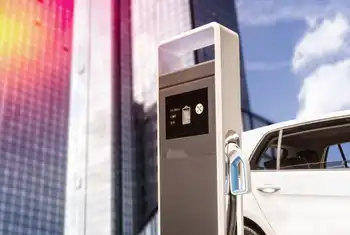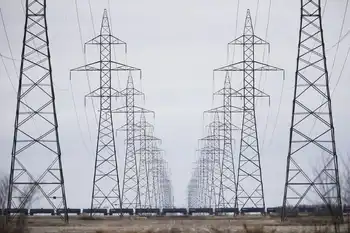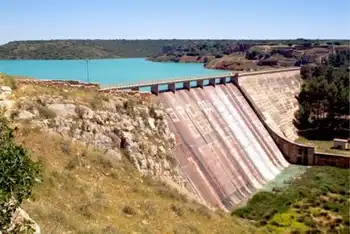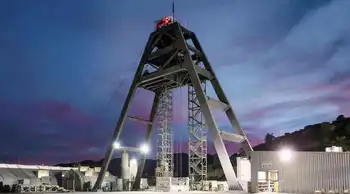Utilities, Coal Companies Support DOE Zero-emission Plant
WASHINGTON, DC -- - Eight utilities and coal companies came out in support earlier this week of the Bush administration's $1 billion proposal to build a zero-emissions coal-fired power plant in the next 10 years.
Research scientists and environmentalists have applauded some aspects of the so-called FutureGen project, but say that much of the technology that would be used in the plant has already been developed by other industries. DOE officials contend however that the demonstration plant is part of an effort to drive down the cost of pollution-reducing and carbon-storage techniques.
In February, the administration laid out plans for FutureGen, a plant that would would turn coal into a gas for hydrogen fuel cells. The prototype would explore several technologies to attempt emissions-free coal energy, including using a membrane to remove upwards of 90 percent of CO2 from the coal gas, storing the CO2 underground in geological formations. Sulfur dioxide, mercury and nitrogen oxides would be removed as well.
The Energy Department has committed to paying about 80 percent of the tab, and will ask about 20 countries to become involved with the project starting this summer (Greenwire, Feb. 28).
Eight power and coal companies, including American Electric Power, Peabody Energy, Southern Company, and others, said earlier this week that they are forming an alliance in support of the initiative, an important step given some companies' initial skepticism regarding the proposal. "Companies are skittish about the ability of the federal government to deliver on a financial commitment over a long period of time," AEP's Dale Heydlauff told the New York Times in February when the program was proposed.
"Providing that we can collaboratively define agreeable terms and technological content that meets the needs of the nation and our industry, and protects the interests of our shareholders, we will seriously consider becoming the charter industrial members of a public-private partnership," the companies said in a letter to President Bush earlier this month. "We plan to formalize an alliance in early summer and seek, from our respective organizations, a major financial commitment to cost-share the effort over the coming decade."
AEP and other companies haven't set out any hard financial targets yet, said Pat Hemlepp, a spokesman for AEP. "We felt it was important that companies in this alliance move to the head of the line," he said. "If this moves forward, the other companies will want to come on board."
Sequestration experts and environmental groups say the FutureGen project should only be one aspect of an expanded research and demonstration effort by the federal government.
"I think FutureGen should be looked at as part of the program," said Howard Herzog, principal research engineer at the Massachusetts Institute of Technology, but the project shouldn't be considered a substitute for DOE's core research program. DOE's carbon capture storage research has "grown significantly," Herzog said, to about $30 million per year. And DOE has boosted some sequestration research efforts recently. In November, DOE Secretary Spencer Abraham proposed up to $90 million for a "nationwide network of regional sequestration partnerships," while speaking before the National Coal Council. (Greenwire, Nov. 22).
Herzog noted that the private sector has been doing a lot of research as well, pointing to the $25 million CO2 Capture Project, an effort by eight oil companies led by BP. But, "money on sequestration overall is way too small," he said. "Thirty million a year is a pittance," he said.
FutureGen "could work hand-in-hand with the research and be very good," said Herzog. "But demonstration projects in the past haven't been as successful. They haven't followed up in the marketplace."
"These plants will not be accepted in the marketplace until you have some sort of policy that restricts carbon emissions," he said. "The government can't put up 80 percent of the money on every one of these plants."
"I think that the Energy Department is serious about moving forward with it," said David Hawkins, director of the climate center at Natural Resources Defense Council. "It seems like there are some companies that are willing to raise their share of the money. All of those are good signs."
But, Hawkins said, "this is a toe in the water. We really need to be swimming laps at this point."
"The building blocks have all been demonstrated," said Hawkins. "We know how to gasify coal. We know how to separate CO2 from a gas stream," he said. "We also know how to inject CO2 into geologic formations." The only way to get such practices widely accepted commercially is by recognizing CO2 as a pollutant, which would "send the required signal to the market."
"It seems to us that this project is far too much future and far too little gen," said Armond Cohen, executive director of the Clean Air Task Force. "Coal gasification is commercially available today and deployed in the chemical industry worldwide. So is the technology for carbon removal and sequestration, in the petroleum industry."
Rather than spending $1 billion on FutureGen, the government should put more funding toward helping companies overcome the "near-term price barrier between coal gasification and conventional coal or gas plants," said Cohen. "Instead, the FutureGen project seems to reflect a kind of moonshot approach that leaves the impression that this technology is at the R&D phase and will take decades to deploy. We're much farther along than that and policy should reflect that fact."
And instead of one large demonstration project, DOE should instead be doing a number of projects to increase the amount of on-the-ground experience with new technologies. "We need more practical experience with storing [carbon] geologically," he said, so that researchers gain experience with a range of different underground options, like abandoned oil fields, coal seams, brine-filled reservoirs and other underground areas.
According to DOE, there is currently only one commercial CO2 geological sequestration facility in the world. Norwegian oil and gas company Statoil has injected about one million tons of CO2 into an aquifer half a mile beneath the North Sea. In that case, the Norwegian government's decision to levy a tax of $50 per ton of CO2 emitted spurred the company towards capturing some of the CO2 lost when it drilled for natural gas.
In the next 30 years, other countries have planned to build coal-fired power plants equivalent to five times the current amount of current coal-fired capacity in the U.S., Hawkins said, and it will be difficult to retrofit those new plants.
"The retrofit issue is a problem," conceded David Conover, director of DOE's Climate Change Technology Program, speaking with reporters at a climate change conference this week. "It's not like putting on a scrubber."
But, Conover said, FutureGen is important as an international demonstration project, as well as domestically. "We're fooling ourselves if we think China's going to give up their coal reserves," he said.
"A lot of the technology is available and what we're trying to do is go well beyond that," said George Rudins, DOE's deputy assistant secretary for coal and power systems. "If you look at carbon sequestration today, some of the sequestration costs can be as high as $200 a ton of carbon," which translates to about $55 per ton of CO2. That would be a "considerable penalty on the costs of electricity," said Rudins.
DOE's overall R&D goal is to bring carbon sequestration costs down to $10 per ton, which would result in an electricity cost increase of only two-tenths of a cent per kilowatt hour. Researchers have already made large strides in reducing sequestration costs, said Rudins. "None of the existing processes approach the kinds of cost targets we've talked about," he said. "The objective is to reach for the cutting-edge technology which has the greatest performance and cost potential."
The department hopes to get EPA and other federal agencies involved with FutureGen to monitor the potential effects of CO2 storage, Rudins said.
Related News
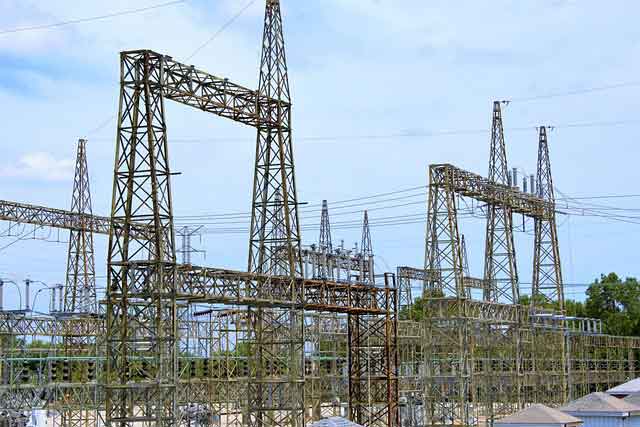
Berlin Electric Utility Wins National Safety Award
BERLIN - The Town of Berlin Electric Utility Department has been recognized for its outstanding safety practices with the prestigious Safety Award of Excellence from the American Public Power Association (APPA). This national honor is a testament to the utility’s commitment to maintaining the highest standards of safety for its workers, ensuring both their well-being and the continued reliability of the electrical services provided to the community.
Recognition for Excellence
In an era when workplace safety is a critical concern, the Town of Berlin Electric Utility Department’s achievement stands out. The department earned the Gold Designation award in the category…

